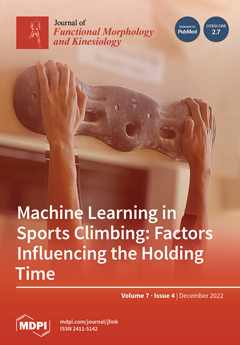Trail running is an increasingly popular discipline, especially over long-distance races (>42.195 km). Pacing strategy, i.e., how athletes modulate running speed for managing their energies during a race, appears to have a significant impact on overall performance. The aims of this study were
[...] Read more.
Trail running is an increasingly popular discipline, especially over long-distance races (>42.195 km). Pacing strategy, i.e., how athletes modulate running speed for managing their energies during a race, appears to have a significant impact on overall performance. The aims of this study were to investigate whether performance level, terrain (i.e., uphill or downhill) and race stage affect pacing strategy and whether any interactions between these factors are evident. Race data from four race courses, with multiple editions (total races = 16), were retrieved from their respective events websites. A linear mixed effect model was applied to the full dataset, as well as to two subgroups of the top 10 male and female finishers, to assess potential differences in pacing strategy (i.e., investigated in terms of relative speed). Better finishers (i.e., athletes ranking in the best positions) tend to run downhill sections at higher relative speeds and uphill sections at lower relative speeds than slower counterparts (
p < 0.001). In the later race stages, the relative speed decrease is larger in downhill sections than in uphill ones (
p < 0.001) and in downhill sections, slower finishers perform systematically worse than faster ones, but the performance difference (i.e., between slower and faster finishers) becomes significantly larger in the later race stages (
p < 0.001). Among elite athletes, no difference in pacing strategy between faster and slower finishers was found (
p > 0.05). Both men (
p < 0.001) and women (
p < 0.001), in the later race stages, slow down more in downhill sections than in uphill ones. Moreover, elite women tend to slow down more than men (
p < 0.001) in the later race stages, regardless of the terrain, in contrast to previous studies focusing on road ultramarathons. In conclusion, running downhill sections at higher relative speeds, most likely due to less accentuated fatigue effects, as well as minimizing performance decrease in the later race stages in downhill sections, appears to be a hallmark of the better finishers.
Full article






